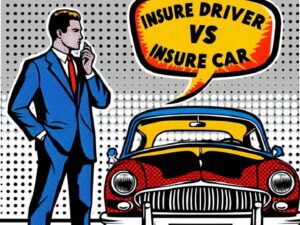Rising Rate of Car Repossessions Worrying Sign For Economy

Photo: MediaNews Group/Orange County Register via Getty Images / Contributor (Getty Images)
For most Americans, owning a car is a necessity. If you don’t have one, you essentially can’t go anywhere, which is an especially big problem if you have a job that doesn’t allow remote work. Now we’re seeing an increasing number of consumers defaulting on car loans they can no longer afford, which seems bad.
NBC reports that while car repossessions dropped dramatically in the early stages of the pandemic, recently, the number of borrowers who are behind on their car payments is back to pre-pandemic levels. And for those who are in the lowest income bracket, the default rate is higher than it was back in 2019. Industry analysts are reportedly afraid that this trend will continue into 2023.
In fact, it may get worse as the average monthly new car payment has risen 26 percent since 2019. It’s currently $718 a month, and one in six new car buyers is paying $1,000 a month or more. Unemployment remains low, and gas prices continue to fall, but many other goods and services now cost a lot more than they did a couple of years ago.
“These repossessions are occurring on people who could afford that $500 or $600 a month payment two years ago, but now everything else in their life is more expensive,” Ivan Drury, Edmunds’ director of insights told NBC. “That’s where we’re starting to see the repossessions happen because it’s just everything else starting to pin you down.”
The Consumer Financial Protection Bureau is reportedly especially worried about loans from 2021 and 2022, when new car prices were especially high, as well as so-called subprime borrowers with below-average credit scores.
G/O Media may get a commission
78% Off
Invicta Men’s Pro Diver Quartz Watch
Time to buy a watch
Has a stainless steel case, a beautiful black dial, luminous hands, and is made using Japanese quartz movement, along with being water resistant up to 100 meters.
“Loans taken out in those years are performing worse than prior years just because those consumers had to finance cars once the supply chains were jammed and the prices started to go up,” said Ryan Kelly, acting auto finance program manager for the CFPB. “Those consumers got hit with inflation twice. First, when they had to finance a car after the prices went up, and then when they had to put gas in the car after the Russia-Ukraine conflict started. So there’s just a lot of consumer stress.”
But even though analysts are worried, they don’t think we’ll see numbers close to where they were in 2008 and 2009. Last quarter, auto loan delinquencies were at 2.2 percent, which is lower than the 2.35 percent we saw in the third quarter of 2019. Ally Financial reportedly believes that number could hit 3.8 percent. Meanwhile, back in 2009, delinquencies were more than 4 percent.
Unfortunately, for consumers, it doesn’t look like conditions will change in their favor anytime soon. Interest rates will likely remain high, and a limited supply of new vehicles will likely keep both new and used car prices high while companies continue to raise prices at a higher rate than inflation. So if you don’t absolutely have to buy a new car, it’s probably wise to hold off.
“I [don’t] dare think what happens to people who are signing up for new loans today,” said Drury. “It’s not going to be better when we see these payments so high.”



